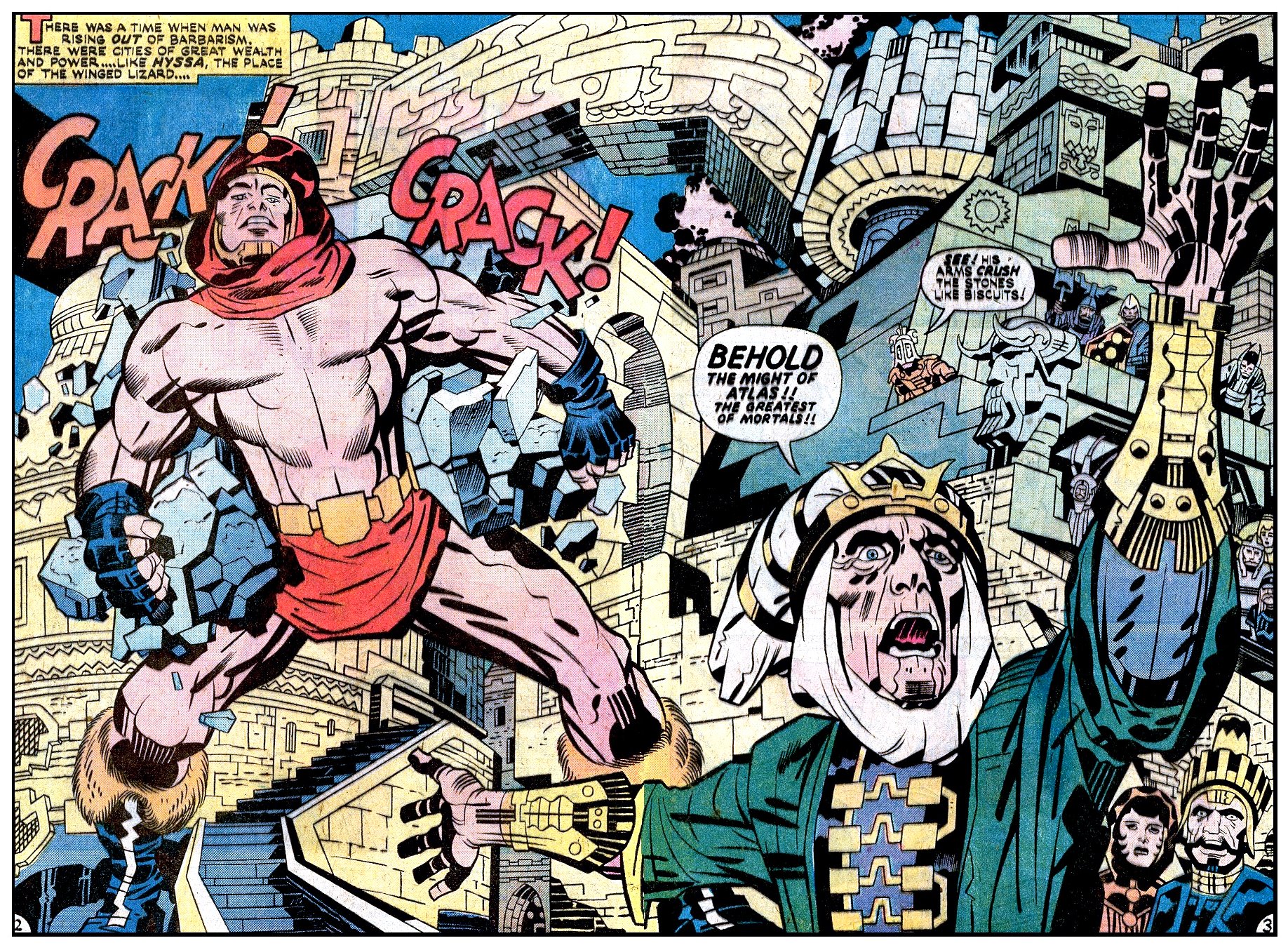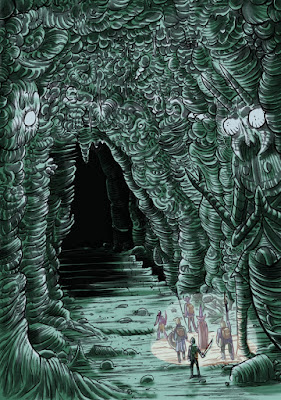When I said this might be a recurring feature, I didn't think it would be so soon, but Jack Shear of New York asked an interesting question as follow-up to a comment I made on social media: "What does it look like when Azurth PCs are playing the straight man to the setting's fancifulness?"
My comment about "the PCs as straight men" was a reference to an idea that gets bandied about from time to time that originated with
this blog post, I believe. Now, I sort of like this idea for a lot of settings. But the Land of Azurth is different.
Different does not mean my Azurth campaign is comedy game, though like any D&D game, it has its share of comedic moments. Rather, it is a world that is very serious in its unseriousness, even its ridiculousness. Pun names for characters (like the perpetually throat-clearing mayor of one small hamlet, Effluvia Flimm) are common, and "joke" monsters or treasures are not unheard (though they aren't particularly common).
I'm not looking to get a laugh of the players with all this, though it's fine if I do on occasion. Rather, I'm trying to present a certain of world like Oz or Ooo, and these are just the sort of things these kind of worlds have. In this context, I hope that this sort of playfulness aids immersion instead of harming it.
So, anyway, the world as presented sort of puts the player in the roll of straight man in a couple of ways. One, they must stay goal-oriented and aware of potential danger (even death), despite the occurrence of odd, perhaps even ridiculous things: A dwarf polymorphed into a horse has disguised itself among hippogriffs in a sub-grade-school costume. You make landfall on an island populated by living candy. A court of talking animals puts you on trial for the slaughter of their kind. None of these things are the stuff of "serious" fantasy, at least of the action-oriented sort, yet here they are. The DM presents them seriously, with ne'er a nudge or wink, and the characters had better deal with them as such, even as the players may note their ridiculousness. And it keeps coming.

The second way is perhaps more common to certain sorts of adventure fantasy, specifically the works of Jack Vance. The PCs are adventurers of competence, even heroism, in a world where those traits may be uncommon. Like Vance's Adam Reith in the Planet of Adventure series, the PCs must contend with venal, self-absorbed, conniving, hidebound, and eccentric NPCs quite frequently. Some of these NPCs are also dangerous in the usual D&D sense, but most of them are just somewhat unhelpful. The PCs can only shake their head in frustration and press on.
This latter bit could probably get annoying to players if overdone, but I seem to have kept it in bounds, because the players actually seem to have some affection for a few of the recurring NPCs, even if they roll their eyes at them. It tends to be clear who is a villain and who is just an everyday rogue, and they reserve their hatred for that second bunch. Also, having distinctive characteristics for the NPCs seems to to keep them entertained.
So that's how Azurth is often the Costello to the PCs Abbot.
Got a question on the Land of Azurth or the campaign? Leave it in the comments or email me.
















.jpg)










































